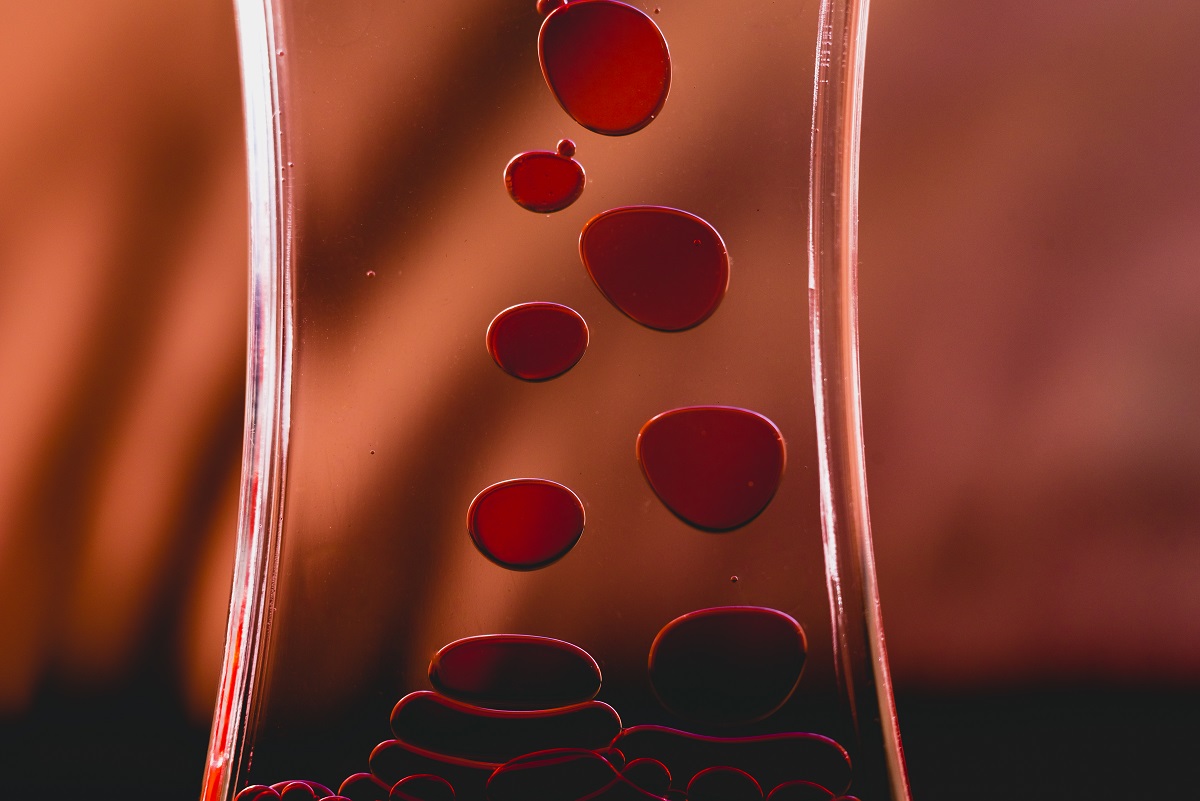A group of disorders that pass from biological parents to biological children is known as sickle cell disease. In this article, we will discuss sickle cell anemia. It is a health condition in which the shape of red blood cells is negatively affected. The red blood cells carry oxygen to all body tissues and organs.
In normal circumstances, the shape of red blood cells is round and flexible. This allows easy movement through blood vessels. In people with sickle cell anemia, the shape of red blood cells becomes sickle or crescent moons and rigid and sticky, which slows down or blocks blood flow.
The treatment goal is to lessen the symptoms and prevent complications. However, some newer treatment options may cure sickle cell anemia.
Symptoms
In most cases, the symptoms appear near 6 months of age and vary from person to person. Check below some of them:
- Anemia – Healthy red blood cells usually live roughly 120 days and thereafter are replaced. However, the sickle cells break down and die in 10-20 days, which leads to red blood cell deficiency. As a result, the body cannot get enough oxygen.
- Pain episodes – The primary symptom of sickle cell anemia is extreme pain (pain crises) that happens periodically. Pain crises usually occur when affected red blood cells block blood flow to the chest, abdomen, and joints.
- Swelling of feet and hands – When the blood flow is blocked it can lead to swelling.
- Frequent infections – One of the most important parts of the body that protects us against infection is the spleen. However, sickle cells may provoke damage to the spleen which makes us more prone to getting infections. Moreover, it is advised to vaccinate babies and children with this condition because it will help to prevent dangerous infections (such as pneumonia).
- Delayed growth or puberty – A deficiency of red blood cells can lead to reduced growth in children and delayed puberty in teenagers.
- Vision changes – In case a blocked blood flow occurs in blood vessels of the eyes it may lead to vision problems.
It is advised to seek medical help right away if the following symptoms occur. For example:
- Unexplained numbness
- Severe headaches
- Trouble walking or talking
- Confusion
- Sudden vision changes
- Paralysis or weakness in the face, arms, or legs
Causes
The primary cause of sickle cell anemia is a gene change that tells the body to produce hemoglobin. This is a compound in the red blood cells that is rich in iron. It allows the red blood cells to carry oxygen to body tissues and organs.
This condition passes to children if both parents have one sickle cell gene. In case only one parent has this gene, children will have sickle cell characteristics. Those who have one hemoglobin gene and one sickle cell gene will produce both hemoglobin and sickle cell hemoglobin. In such cases, they do not experience any symptoms but are disease carriers.
Risk Factors
Both parents should have sickle cell gene to transmit the condition to children. However, in the U.S. most commonly affected people are of African, Mediterranean, and Middle Eastern descent.
Complications
People who suffer from sickle cell anemia can also experience some complications. For example:
Stroke
Abnormal red blood cells can block blood flow to the brain and cause stroke. The most common stroke symptoms include seizures, numbness of the legs and arms, slurred speech, and loss of consciousness. This condition can be fatal. That’s why is advised to get medical help right away if any of the previous symptoms occur.
Acute Chest Syndrome
This is a life-threatening complication and it happens when blood flow is blocked in the lungs. Common symptoms include fever, shortness of breath, and chest pain.
Avascular Necrosis
In some cases, sickle cells block blood flow in vessels that supply the bones, which can lead to narrowed joints and death of the bones. Most commonly it occurs in the hips but can appear anywhere.
Pulmonary Hypertension
An increase in blood pressure in the lungs can happen due to sickle cell anemia. This complication happens usually in adults. Extreme tiredness and trouble breathing are the most common symptoms.
Organ Damage
Damage to certain organs can occur due to insufficient oxygen. In people with sickle cell anemia, the blood is low in oxygen.
Splenic Sequestration
This is a life-threatening complication that leads to an enlarged spleen. It occurs due to the accumulation of sickle cells in the spleen.
Blindness
If the blood flow in the eye’s blood vessels is blocked it can provoke some vision changes including blindness.
Leg Ulcers
Gallstones
Gallstones usually appear due to an increased level of bilirubin in the body. This substance appears as a result of red blood cell breakdown.
Priapism
This is a complication in which a person experiences prolonged and painful erections. It occurs due to a blockage of blood vessels in the penile. Not treating this complication can lead to erectile dysfunction (ED) over time.
Deep Vein Thrombosis
Blood clots can occur in people who have sickle cells. As a result, you are at higher risk of developing pulmonary embolism. Sometimes, this complication can lead to death.
Pregnancy Complications
The risk of blood clots and hypertension (high blood pressure) is high in pregnant women with sickle cell anemia. Moreover, this health condition also increases the risk of miscarriages, premature birth, and low birth weight.
Prevention
If you are a person who carries the sickle cell gene, you may need to visit a genetic counselor to discuss the risks before pregnancy. You can also consult with your doctor about treatment options and prevention options.
Diagnosis
In the U.S. blood test is a routine newborn screening and doctors can check for the hemoglobin form that shows whether the baby has sickle cell anemia. However, doctors take blood from arm veins in adults. In early childhood, they can take the blood from a finger or heel. Thereafter, this blood sample is sent to a laboratory to be screened for hemoglobin sickle cell.
In case your doctors confirm sickle cell anemia in your child, they can recommend additional tests to check for complications.
Stroke Risk Test
Healthcare providers may use an ultrasound machine to determine the risk of stroke in your children. This test involves sound waves that determine how much blood flows to the brain. If there is an increased risk of getting a stroke, a blood transfusion may needed.
Prenatal Test
This is a test that helps doctors to identify sickle cell genes before birth. Doctors will get a sample of amniotic fluid from the womb and send it to the laboratory.

Treatment
The treatment goal is to reduce the pain and prevent complications. Medications and blood transfusions are usually prescribed by doctors in sickle cell anemia treatment. Sometimes, a stem cell transplant or gene therapy can cure this condition.
Medications
- Hydroxyurea – This medicine should be taken daily because it helps to lessen pain. However, it may elevate your risk of infections. It is not allowed to use this medicine in pregnant women.
- L-glutamine oral powder – This drug decreases the frequency of pain crises.
- Crizanlizumab – This is an injection used to reduce pain in adults and children over 16 years old. Common adverse reactions include nausea, joint or back pain, and fever.
- Voxelotor – This medication can be used in children over 12 years old and adults. To administer this medicine, use a glass full of water. It helps to reduce anemia risk and improve blood flow. Headaches, nausea, diarrhea, extreme tiredness, rash, and fever are the most common negative effects of this medicine.
- Pain-relieving medications – In some cases, healthcare professionals may prescribe narcotics to relieve severe pain caused by sickle cell anemia.
Infections
Doctors recommend taking Penicillin from 2 months of age to 5 years old or even longer to prevent infections including pneumonia. This is a life-threatening respiratory condition for children with sickle cell anemia. The same medicine should be taken in adults for their entire life if they had surgery that removes the spleen.
It is very important for children with sickle cell anemia to get vaccinated. Otherwise, the infections can become severe. Doctors should make sure that your child gets vaccinated against the following diseases. For example meningitis, hepatitis B, flu, pneumonia, and others.
Other Treatment Options
- Blood transfusions – This procedure is often recommended by doctors for people with sickle cell anemia to treat and prevent complications. During this procedure, doctors will remove your blood and give you another healthy blood that does not contain sickle cells. However, there is a risk of an immune response to the donor blood. It usually leads to iron buildup in the body.
- Stem cell transplant – Another name for this procedure is bone marrow transplant. It involves the replacement of your bone marrow with a healthy one from a donor. This is one way to cure sickle cell anemia. In any case, this procedure is recommended only for those who suffer from severe symptoms and complications.
- Stem cell gene addition therapy – This procedure can also cure sickle cell anemia and it is used when it is not possible to find a donor. It involves the removal of stem cells and an injection of a gene to make typical hemoglobin. Thereafter the stem cells are given back to the patient (this process is known as autologous transplant).
- Gene editing therapy – This is a treatment option that involves the treatment of affected stem cells. In other words, doctors remove from the body these stem cells and help restore their function (to produce healthy red blood cells). Commonly, people do not have any symptoms after this therapy. Gene editing therapy is an FDA-approved treatment for people with sickle cell disease and older than 12 years old.
Frequently Asked Questions
What is the primary sickle cell anemia cause?
This is an inherited health condition and happens due to a defect in a gene. However, children get this disease when both biological parents carry this defective gene.
How common is sickle cell anemia?
This health problem affects more than 100,000 people in the U.S. and 20 million people in the entire world.
Is it possible to cure sickle cell anemia?
The only way that can cure this health condition is a bone marrow transplant. However, it can be used when a person experiences severe symptoms and complications. If you have additional questions, ask your healthcare professional.



